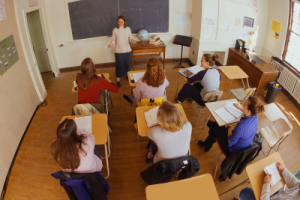How can the “Pause Procedure” be used to enhance learning?
Posted by PLB Administrator Assistant · Leave a Comment

 Lectures are usually planned placing great importance on the information that is to be conveyed and the means by which we communicate it. We prepare our presentations; choose appropriate strategies and interactive activities all with the utmost of care. But how often do we “Pause” to allow the information to sink in and register in the minds of our students?
Lectures are usually planned placing great importance on the information that is to be conveyed and the means by which we communicate it. We prepare our presentations; choose appropriate strategies and interactive activities all with the utmost of care. But how often do we “Pause” to allow the information to sink in and register in the minds of our students?
Often, teachers are trying to present maximum information within the allotted time due to which, students have a lot to digest at the end of class. This leaves them with little time to comprehend and analyze the material with most retaining a very small percent of the original content taught in class. Thus “Pausing” in between the lecture should also be planned ahead to ensure that learning occurs within the classroom.
What is the Pause Procedure?
Pause procedure is a technique in which the teacher makes use of strategic pauses to provide students with time during which they can review their notes, discuss among their pairs or undertake any similar activity that allows them to clarify, assimilate and retain the material.
When to pause?
Pausing following presentation of key information is most appropriate. Rowe (1983) suggested the use of at least three two minute pauses in the lecture at 8-12 minute intervals to enhance learning. During the initial phase, to ensure adherence to the strategy use a minute timer set for every 10 minutes to force you to take a pause. This serves as a reminder for teachers as they may forget to use this strategy when caught up in their presentations.
Sometimes students may request for more time to review and discuss the material. In such a situation the timer proves handy, as it signals the end of the pause period and the lecture is continued. Thus students are taught to work within the time period of the pause.
What to do after you pause?
The pauses are effective only when the activity that follows stimulates and facilitates students to comprehend, reflect and learn the material. Here are some activities that you can follow with after you pause:
Note taking: Students can use this time to summarize the information presented in written format, listing down key points or main ideas, creating a graphical representation (mindscaping), filling an exit slip etc that allows them to reflect on the material heard.
Pair review: A quick discussion among the pairs will help students in recalling facts, clarifying any misconceptions and filling in facts left out.
Framing questions: Students can be instructed to frame two questions based on the material that was presented. For example “how long was the first World war?”
Crossword: Students are presented with a quick crossword puzzle that they should solve. When called for, these puzzles can also be designed such as to connect previous learning with the present, in turn strengthening the learning.
Discuss here: Can a break or a pause in the middle of a lesson, enhance learning?
Learn more: Take a course



